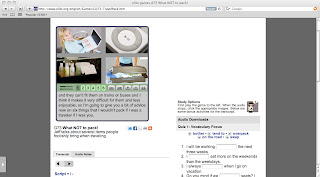MailVU is a useful website for video recording. It serves as a tool where users can record videos of themselves by via webcam.
What I like about MailVu?
- The best thing about MailVu is the fact that it is free. No sign-ups or registrations are needed for users to use it. This website is totally affordable to everyone.
- MailVu is also one of the easiest video recording websites ever created. It only takes three simple steps for users to record themselves. The videos can then be sent to others and to users’ own email address.
- Although MailVu is intended for business purposes, I believe that it can also be used in ELT classrooms, especially in conjunction with the idea of ‘connected classroom’. For example, as a homework, students will have to record themselves presenting about the topic that they learnt in class earlier. This acts as supplementary or ‘follow through’ exercise so that the learning process does not stop when schools end.
What teachers should bear in mind:
- Proper equipments (computers, microphones, webcams, decent internet connection) are needed in order for this website to work properly. This may be an issue as not every student has these facilities at home.
- There is a limit of 10 minutes per recording for free users. Subscription of premium account is needed in order for users to record longer videos.
For video on how to operate MailVu, please click here.
If you find MailVu interesting, you may want to check out Keek.









